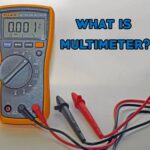The Epc Warning light on your Volkswagen dashboard can be a cause for concern. Understanding what triggers this warning and how to respond is crucial for maintaining your vehicle’s performance and safety. This guide will explain the EPC warning light, its potential causes, and the necessary steps to take when it illuminates.
Understanding the EPC Warning Light
EPC stands for Electronic Power Control. This system manages several critical components in your Volkswagen, including the throttle, engine, and transmission. When the EPC light comes on, it indicates a malfunction within these systems. Ignoring this warning can lead to reduced performance, decreased fuel efficiency, and potentially more serious damage.
Common Causes of an EPC Warning Light
A variety of issues can trigger the EPC warning light. Some common culprits include:
- Throttle System Malfunctions: Problems with the throttle body, pedal, or wiring can disrupt the engine’s air intake, leading to performance issues and triggering the EPC light.
- Sensor Failures: Faulty sensors, such as the mass airflow sensor (MAF), crankshaft position sensor, or camshaft position sensor, can provide inaccurate data to the engine control unit (ECU), resulting in the EPC warning.
- Emission System Problems: Issues with the catalytic converter, oxygen sensors, or other emission components can trigger the EPC light.
- Faulty Brake Light Switch: A malfunctioning brake light switch can sometimes cause the EPC light to illuminate, often alongside other warning lights.
- Wiring and Electrical Issues: Damaged wiring, loose connections, or short circuits can disrupt communication between various components, leading to an EPC warning.
- Low Oil Level or Pressure: Insufficient oil can cause significant engine damage and may trigger the EPC light as a precautionary measure.
What to Do When the EPC Light Comes On
If your Volkswagen’s EPC warning light comes on, it’s crucial to take the following steps:
- Reduce Speed and Avoid Strenuous Driving: Ease off the accelerator and avoid putting unnecessary strain on the engine.
- Check for Other Warning Lights: Note if any other warning lights are illuminated, as this can provide additional clues about the problem.
- Find a Safe Place to Stop: If possible, pull over to the side of the road or find a safe location to assess the situation.
- Consult Your Owner’s Manual: Refer to your Volkswagen owner’s manual for specific information regarding the EPC warning light and recommended actions.
- Seek Professional Diagnosis: It’s strongly recommended to have your vehicle inspected by a qualified Volkswagen technician as soon as possible. They can use diagnostic equipment to pinpoint the exact cause of the EPC warning and perform the necessary repairs. Delaying diagnosis and repair can exacerbate the problem and lead to more costly repairs.
Preventing EPC Warning Light Issues
While not all EPC issues are preventable, regular maintenance can significantly reduce the risk:
- Adhere to Scheduled Maintenance: Follow the recommended maintenance schedule outlined in your owner’s manual for oil changes, filter replacements, and other essential services.
- Address Warning Lights Promptly: Don’t ignore any warning lights, even if they seem minor. Early diagnosis and repair can prevent more significant issues.
- Use Quality Fuel and Oil: Using the correct type and grade of fuel and oil can help maintain the performance and longevity of your engine and related components.
Conclusion
The EPC warning light in your Volkswagen should never be ignored. Understanding its potential causes and taking appropriate action can help you avoid costly repairs and ensure your vehicle’s safe and reliable operation. Seek professional assistance for diagnosis and repair to address the underlying issue and keep your Volkswagen running smoothly.
